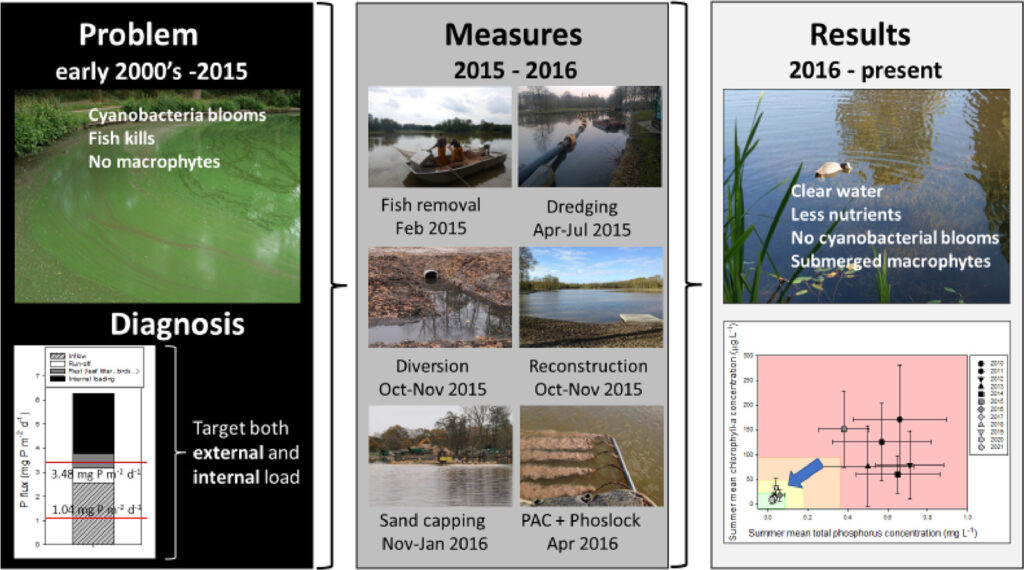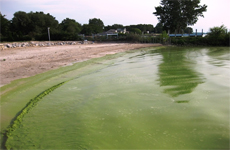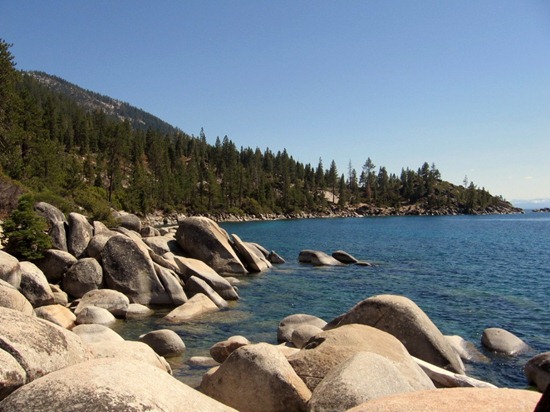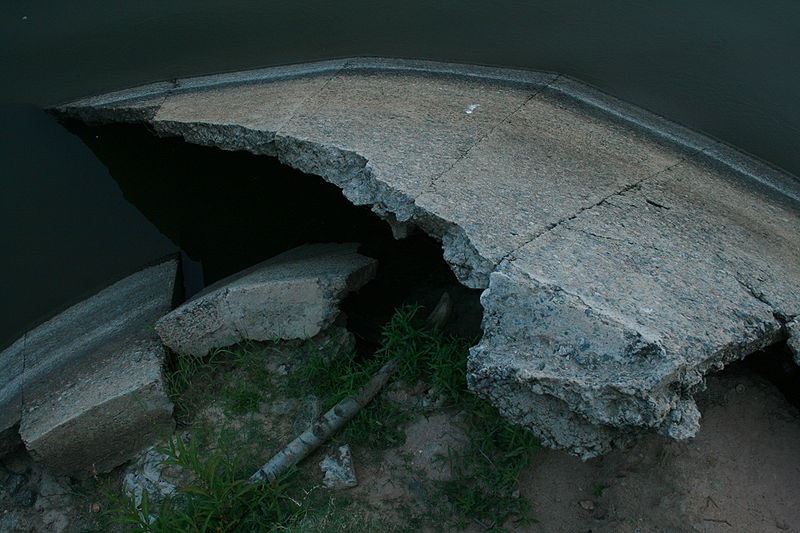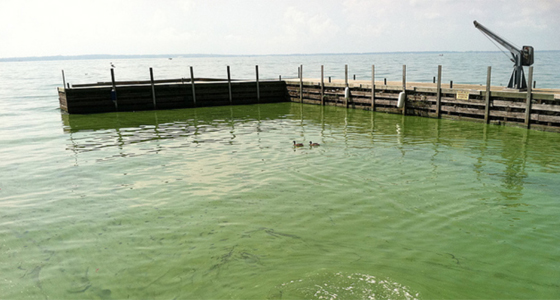Research Brief: Evaluating the Efficacy of Targeted Lake Restoration Measures in Lake Groote Melanen
0Lake restoration efforts vary from place to place and are focused on resolving specific water quality and ecosystem issues. In the case of Lake Groote Melanen, Netherlands, internal and external nutrient loads are the main drivers of poor water quality and reoccurring cyanobacterial blooms.
A 2024 article published in Water Research reports on the system analysis guided lake restoration package that was implemented between January 2015 and May 2016 on Lake Groote Melanen. Monitoring of the lake occurred from 2013 to 2023 and focused on documenting improvement in lake water quality and ecosystem health.1
The lake restoration package was expected to yield rapid, strong, and enduring improvements in water quality reflected in the absence of cyanobacterial bloom, low nutrient concentrations and clear water.
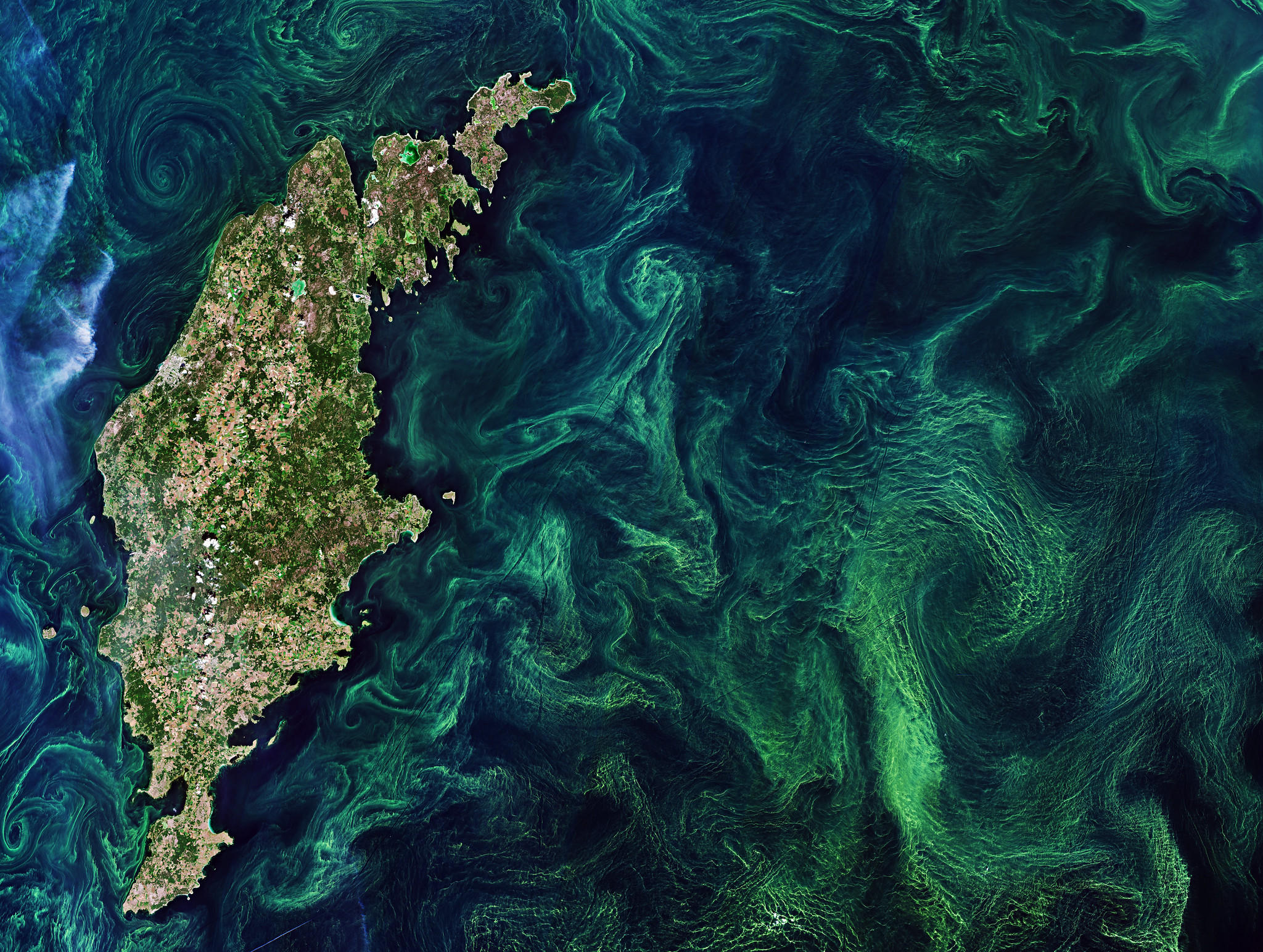
The Copernicus Sentinel-2 mission takes us over the green algae blooms swirling around the Baltic Sea. (Credit: modified Copernicus Sentinel data (2019), processed by ESA, CC BY-SA 3.0 IGO
Methods
In order to evaluate the influence of the lake restoration initiatives specifically by comparing water quality variables from five years before intervention and five years after intervention in Lake Groote.
First, a lake system analysis was performed on Lake Groote Melanen to identify lake stressors, sources of stressors, and important characteristics of the lake. Internal and external nutrient loads resulting from precipitation (runoff), groundwater seepage, and influxes from neighboring streams (a drainage ditch and the stream Jankebergloopje) were the primary drivers of blooms in Lake Groote Melanen.
Lake restoration measures aimed to broadly improve water quality, minimize cyanobacterial blooms, and prevent fish kills. Furthermore, four specific goals were outlined:
- Reduce external phosphorus load to meet below the currently defined upper critical load.
- Reduce internal phosphorus load significantly.
- Improve water clarity (from turbid to clear).
- Improve lake resilience in order to increase the upper critical load for phosphorus.
The lake restoration package was implemented between January 2015 and May 2016 and started with removing fish from the lake in order to reduce the overall population and total concentration of sediment-resuspending species such as bream and carp.
Second, to reduce external phosphorus loading, the two inflowing waters were disconnected and diverted to a lake outflow receiving system. Leaf litter was reduced by pruning nearby foliage, and vegetated banks were installed to reduce runoff.
Third, to reduce internal phosphorus loads and reduce the risk of winter fish kill, “the sediment layer was removed by suction dredging until the original sand or peat layer […] was removed.”1 Additionally, a capping layer of nutrient-poor sand was applied, and Phoslock was added to the lower 5 cm of the new sand layer.
Finally, lake resilience (defined as water clarity) was improved by removing the hard banks and transforming them into soft banks with a gentle slope and vegetation.
Water quality was monitored between February 2010 and October 2021 with water being sampled monthly from the center of the lake. Turbidity, water temperature, electric conductivity, pH, water level, dissolved oxygen concentration and dissolved oxygen saturation were measured onsite.
Water samples were brought to the laboratory and analyzed for nitrogen compounds, phosphate, total phosphorus, chloride, sulfate, bicarbonate, dissolved organic carbon, suspended solids, turbidity, and chlorophyll-a concentration.1
Data from before and after the lake restoration package were compared to evaluate the efficacy of the methods.
Results
The five main findings of the study were as follows:
- “Diversion of inflow streams caused 35% less water inflow and larger water level fluctuations.”1
- Dredging resulted in temporary increases in turbidity and suspended solids and the addition of Phoslock triggered a temporary exceedance of the Dutch LA standard for freshwaters.
- After-intervention data shows a strong decrease in nutrient concentrations. Total phosphorus was reduced by 93%, total nitrogen by 66%, phosphate by 97%, and dissolved inorganic nitrogen by 83%. This led to 75% lower chlorophyll-a concentrations and 88% lower cyanobacteria chlorophyll-a concentrations.
- Macrophytes that were virtually absent in the before survey steadily increased to ~20% coverage.
- Repeated fish removal was necessary to reduce the overall stock and achieve a low representation of bottom-feeding species that are known to be linked to sediment resuspension.
Overall, each of the lake restoration measures deployed on Lake Groote Melanen proved to be successful, highlighting the need for lake-specific intervention.
Source
- Lürling, M., Mucci, M., Yasseri, S., Hofstra, S., Seelen, L. M., & Waajen, G. (2024). Combined measures in lake restoration – A powerful approach as exemplified from Lake Groote Melanen (the Netherlands). Water Research, 263, 122193. https://doi.org/10.1016/j.watres.2024.122193




